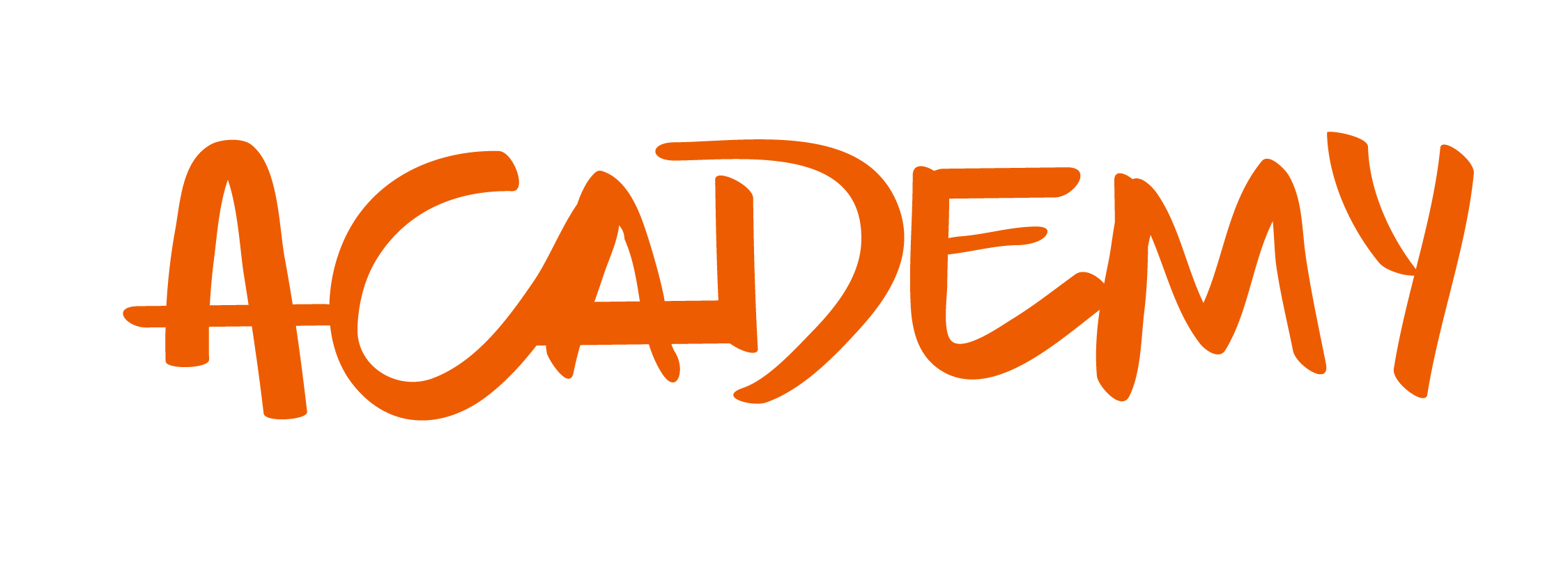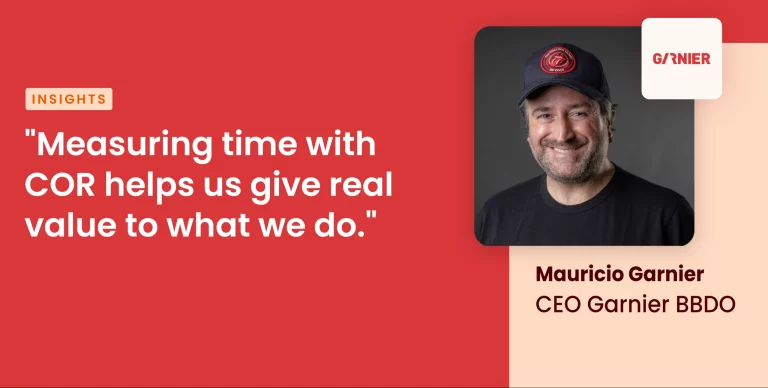Change is a good thing, or that’s what they say. It’s also a permanent reality for modern enterprises. And whether it’s due to re-organization, technology, shifts in company culture, or rebranding, change is still a good thing, but adjusting to it as an organization can be a whole different story.
Change is also hard. Whether it’s starting a new job or starting a fitness regime, change does not come easily to most people. So there’s no wonder when businesses try to implement it, they have a huge mountain to climb.
It’s no secret that change is needed within any organization that wants to thrive and grow. Creative agencies aren’t the exception to the rule. If you want your agency to reach its most profitable state, and hit other goals, big changes are likely to be needed. Having a solid process for change management is essential.
That adjustment to organizational change is why change management exists and why marketing is key to its success. This post will explore the concept of change management, and how it can be implemented in creative agencies.
What is Change Management
Change management is exactly what it sounds like: It’s managing change. It’s a flexible discipline that can change depending on where and how it is needed. However, in simple terms, it is all about ensuring every area, and individual in, a business is equipped with what they need to go through business changes and come out to the other side stronger and ready to do their part to help the business reach its goal.
You’ll need it when your organization decides to implement a new intranet that every employee has to learn or when a CEO comes on board and creates new core values for your agency. You’ll also need it when consumer markets shift and you go through a rebranding process, applying a new language and visuals when speaking as and about your business.
What every individual needs to go through in this process can differ, so it can be quite complex. This is where specific methodologies, such as the RACI matrix outlined below, can help. There’s a common misconception that change management is all about communication and how hard can that be? But it goes way deeper than that. While it focuses on people within an organization, there is also a strong element of ensuring that technologies, systems, and clients are prepared for change.
In a few words, change management is everything done to prepare and support employees and consumers in adopting a change to drive organizational growth. There is no one-size-fits-all change management practice because there is no such type of organizational change. However, no matter the changes to your corporate culture and brand, rolling out your change management initiative with external marketing can ensure retention, application, and even enthusiasm for the road ahead.
So, if you want your creative agency to grow, it will need to change, and often quickly. If you want those changes to be successful, effective change management must be in place. When it’s not in place, you may be wasting precious time and resources, which is never positive when it comes to improving profitability.
Why is agency change so difficult to manage?
So why is managing change in an agency different from managing change in any other business? For a start, agencies are very fast-paced and in a constant state of flux. Time isn’t always on their side, and managing change successfully takes time.
On the flip side, agencies have to move and adapt with their clients, and with changing technologies and times, so in theory that should equip them with the skills needed to adapt to change.
As independent, business systems and workflow consultants, we spend a lot of time in creative agencies. Whether it’s helping them implement new job management software or suggesting processes to help them work more efficiently and profitably, the nature of our work is helping agencies to change.
Here we share our tips from years of experience on how to make change stick.
There are 3 stages for optimizing change in your agency:
Prepare for change
Making big changes to processes in your agency can be a juggling act, so you must have a plan in place from the beginning.
- Define your change management strategy
When thinking about what your future business looks like, you need to clarify how the business process will work once changes are implemented. Then you need to share that goal with the rest of your agency. Because the key to successful change management is company-wide communication, not just with your key stakeholders.
- Prepare your change management team
Formally nominate someone from each team to be an ambassador for the change that’s taking place. This will be a sign that input is company-wide, not just from a select few at the top of the food chain.
- Develop your sponsorship model
How are you going to get people on board? This is where communication and engagement are key. You want the whole to be involved and excited.
Managing Change
This can be the hard bit. You’ve decided your business needs to change, but how do you manage that company-wide when you have all those individual personalities, just waiting to resist change? It can be daunting, but there are companies and agencies out there that have done it successfully and if they could, that means you can do it too.
- Create a plan
To successfully implement your change management plan, you need to ensure continued communication and engagement with your entire team. A sense of inclusion and involvement will be key to your success.
It’s very easy to exclude the creatives in your agency, as there’s often a feeling that they should be left alone to continue the business of…well…being creative! There’s a universal thought that their creative minds couldn’t possibly cope with process change as well. But they cope with change every day. A client changes a brief or a Creative Director tells them to rework an idea, they adapt. Excluding them from the initial process and only bringing them in at the end, will not only encourage resentment, but most importantly, you will not have their buy-in which can be detrimental to the success of the project.
All parts of the business need to be engaged and engaged and educated. Show them the benefits – to them personally and to the company as a whole and be sure to do this before the change takes place.
- Take Action
During implementation, it’s important to stick to the deadlines and milestones set in your plan. Quite often creative agencies make the mistake of putting their change management plans aside when an unexpectedly busy period pops up. But it’s important that these potential issues are addressed when you develop your plan, and that there’s a contingency in place.
There will always be something unexpected when you work in an agency, it’s the nature of the business. By continually putting your plans aside, you are effectively saying to your team that the change isn’t a priority, so it will become less of a priority to them.
To successfully implement your change management plan, you need to make sure you continue to communicate and engage with your entire team. Again, a sense of inclusion and involvement will be the key to your success.
Reinforcing Change
Once your new process is in place, there’s still some work to be done. The process needs to be reinforced, and possibly refined.
Collect and analyze feedback.
Encourage feedback from your team. Asking them to provide feedback shows them they have a voice, and that their contribution is important to the project being a success. Their feedback can also help find any gaps or inefficiencies in the process.
Diagnose gaps and manage resistance.
Once you have the feedback from your team, it’s time to diagnose any gaps and inefficiencies. Then work as a team to find creative and effective solutions.
If you encounter resistance among some of the team, try not to revert to the carrot and stick approach to get them to toe the line. Instead follow the principles set above and concentrate on education, engagement, and communication.
Finally, don’t forget to celebrate the success. It’s very easy to focus on the things that haven’t gone according to plan. But celebrating success is good for company morale.
Where does Marketing come in?
A rebranding may be the most obvious example of where marketing plays a role in change management, but it’s not the only change management initiative that benefits from strong marketing. No matter your change initiative, two critical pieces must be considered and addressed through marketing: employee involvement and visual aids.
To start, effective change requires systematic employee involvement. New brands don’t succeed without the embrace of the team. The same is true of change initiatives. Like consumers who are attracted to brands that share their values, the modern employee is attracted to changes in culture when they feel like they are part of making that change – and from user manuals and pocket guides to informative videos and blasts, achieving that employee ownership is best accomplished through strategical intern marketing tactics.
Secondly, we´re all visual learners. That means providing a visual component to your change initiative provides a useful aid for understanding and retention, for bringing it to life in the eyes of employees and consumers. Take the increasingly popular strategic corporate narrative, for example. To make their culture attractive, more and more organizations want consultants to develop narratives that get employees on board with their new corporate vision.
Why do creative agencies in particular need change management?
Most creative agencies are made up of lots of moving parts. There’s the creative side, usually encompassing any number of roles such as designers, social media experts, photographers, copywriters, and so on. These people are often highly talented at their jobs but may struggle with following rigid processes, especially where change is involved.
Them, most creative agencies also have people who work more on the operations side of things. While these people will have a good understanding of the creative work, they’re usually more focused on the day-to-day runnings of the agency and ensuring that it can be profitable. There can be some overlap between these two camps of people, but of course, everyone is an individual. This means that all sorts of conflicting needs, wants, and priorities will be present. Add to this the need for new or updated systems, technologies, and ways of working, and it’s a recipe for confusion and chaos if not executed properly.
Clients can also be notoriously fussy! They will need to be prepared for the change to take place. Of course, change is usually a good thing, but it can take some work to persuade some clients who are used to something else. Effective change management can also be used to compare clients and ensure they can navigate the changes and see the real value in them.
Creative agencies are unique compared to other businesses because, to be successful as possible, they need to strike the right balance between excellent creative work and profitability. Having sound change management systems in place can help with this.
What are the benefits of the RACI matrix for creative agencies?
RACI stands for Responsible, Accountable, Consulted, and Informed. As we’ve already briefly touched upon, it´s an effective methodology for setting out who is doing what in a project.
Responsible people are those whose responsibility is to complete the task, they do the required work. They can be, and often is, more than one person who is assigned as Responsible.
Accountable people are those who are in charge of the task’s accurate completion. It is common for team members to be both Accountable and Responsible in the RACI matrix. However, there should be only one person who is ultimately deemed Accountable for the task.
Those who are Consulted are the people whose opinion is needed and matters for that specific task. They are typically the experts in that specific area, but they may not be involved in the actual execution of the work.
Anybody who is informed will be kept up-to-date on the project at key points, however, their input is not sought.
At its core, RACI is fairly straightforward. Normally, it takes the form of a table that outlines each stage of the project. Then, each person in the agency can be assigned a letter depending on whether they are to be responsible for, accountable for, consulted on, or informed of that aspect
Utilizing RACI for change management in creative agencies can have many benefits. For example:
- Communication
While effective change management isn´t all about communication, it’s a very important part. Using the RACI matrix makes communication easy. Everyone knows what they’re supposed to be doing, but also what others are working on and when. This can save time and ease confusion, helping projects to be more streamlined.
- A streamlined process
Indeed, using RACI can streamline the core change management process as a whole. Creative people do their best when they have lean processes in place to guide them but still allow creative freedom.
This applies to change management as well as more general processes. The more streamlined the change management process is, the easier it will be for everyone to follow without feeling like their creativity is being stifled. The key to good change management is ensuring that the changes are implemented positively in the long term, and if everyone in the agency is on board, this becomes far more straightforward.
- Help everyone to be on the same page
Similarly, as I’ve already mentioned, most creative agencies are made up of lots of talented people who all perform very different roles. As such, it can be hard to have all of their thoughts aligned. Using the RACI matrix can help alleviate this problem by clearly setting out what needs to be done by who, and when certain people can take more of a back seat. This can reduce conflicting opinions from arising and ensure greater harmony throughout your team as important changes take place.
- Smooth transitions
When changes occur within a business, they are often key points where projects or tasks may be handed over to different people or departments. If this isn’t excluded properly, things can start to slip, tasks may be lost, and change management overall may suffer. However, the RACI matrix clearly and simply lays out what is to be handed over, to who, and when, to make these transitions as smooth as possible to the benefit of the project.
- Prioritizes resources
While big changes are often vital for creative agencies to grow, there are finite resources to implement these changes. However, the RACI matrix can help you to allocate the resources to the key areas, and make sure that enough is available to help the changes go smoothly.
The secret to success
The real secret to creating a harmonious and successful change management project is managing people. If you engage and communicate with your entire team through every step of the process you’ll be onto a winner.
A day in the life of a Project Manager in Advertising
In the advertising world, we will often find products that require marketing campaigns that need promotion to achieve a specific business goal. For projects of this kind of wingspan, a marketing project manager is what you need for the job.
They work with other departments, upper management, sales, advertising, and team members. We should mention that a project manager has a rather important role since they are responsible for planning and implementing marketing strategies and promoting brand awareness.
An advertising project manager must adapt to the organization, and carefully plan and prioritize campaigns to accomplish marketing project goals. Think of him as the glue that holds everything together because they are responsible for keeping the project on track and ensuring collaboration runs smoothly.
How to Successfully manage advertising Projects
Every project has a life cycle. A project manager must drive those projects through their life cycle and give them closure with success.
For advertising Projects it goes like this:
Step 1: Identify tasks leading to the project goal
Once a project is conceptualized and the required approval obtained, it’s time to figure out how to achieve the project objectives
To do so, identifying the components needed to achieve your goal is key. This includes determining the tasks that contribute toward project completion, as well as the required resources, timelines, and budgets.
Putting task identification into action
Quantify Goals: Start by making sure project goals are clearly outlined and quantifiable. As part of that, determine the key performance indicators (KPIs) the project will use to define what success looks like. Here is where data starts to come into play. For instance, when launching a new advertising campaign to build brand awareness for your company, the goal might be to achieve a certain percentage increase in brand lift metrics, and these metrics are the project KPIs.
Collect Feedback: Talk to stakeholders and any teams working on the project or affected by it to collect input on the tasks and materials compromising the path to the project goal. They should also estimate how much time and effort is required to get the work done. This feedback is used in the next phase of the project to construct a project plan.
Incorporate research: Research is essential to every advertising project. Therefore, determine if existing research can be applied to meet project goals, or if conducting research must be a part of your task list. In the earlier example of launching an ad campaign to build your company’s brand, a buyer persona is necessary to determine the types of customers to target. If such actor documentation exists, then you can use it. Otherwise, you may need to perform the research as part of your project.
Step 2: Build a project plan
A project plan is invaluable to keep track of the tasks, resources, and budgets involved while adhering to the required timeline for completion. The plan also communicates project status to people across the organization.
For this stage of the project, it’s ideal to use COR’s project management software to build your plan and track progress.
Using this software enables you to focus on project execution rather than spending time making updates to the plan, which happens when using a tool, such as a spreadsheet, that isn’t designed for this work.
Here are the steps involved in building your plan:
- Assemble the tasks: Add the list of tasks to your project plan using the project management tool. Identify tasks that have dependencies and note this on the plan. For instance, if one task must be completed before another can begin, state it explicitly.
- Add other pieces: Assign resources and estimated time to complete each task.
- Set milestones: Denote milestones along the path to completion. These should be akin to project mini goals that, when reached, show clear progress towards completion. If some tasks will take longer to complete, it may be a good idea to set individual milestones for these tasks as well.
- Prep the team: Before moving to the next phase of the project life cycle, hold a kick-off meeting to present the plan and ensure all team members are motivated and prepared to tackle the project.
Step 3: Execute the Plan
Now it’s time to tackle the tasks associated with the project. The project manager oversees the work to be sure it gets done on time and within budget.
While communication with team members is important throughout all phases of the project, it’s particularly critical during this phase.
The project manager needs to know if completing a task is blocked, deadlines are at risk, or budgets may be exceeded. This all requires regular communication with the team and tracking progress on the plan.
- Monitor progress with data: Since every advertising project has quantifiable KPIs, you can collect data and analyze it to validate the progress of the plan. For instance, if you’re implementing a customer survey, track how many people responded to the survey to determine if your goal for the number of responses is moving in the right direction. If not, you’ll know changes to the plan are required, such as sending a reminder email.
- Perform team check-ins: Regular check-ins with the team helps to monitor project progress as well as provide opportunities to identify challenges and how to solve them. So schedule time for these check-ins, whether that means daily, weekly, or other frequencies appropriate for your project.
- Provide status reports: Stakeholders and the project team want to know how the project is running along. A status report provides that information. If you’re using project management software, the tool usually includes a report or dashboard to convey status.
- Project completion: When you’ve reached the project goals, formally inform all team members that the project is completed and review the outcome. Provide any required deliverables to stakeholders as well.
Step 4: Evaluate the results
Once you’ve met the project goals, one final step remains. It’s important to analyze the project outcome to determine if improvements are warranted for future projects.
This is typically referred to as a postmortem, as in the medical term used to describe the autopsy of a dead body to determine the cause of death. Despite the macabre term, it’s a fitting way to describe this step of the process.
- Compare results to KPIs: Evaluate performance relative to the KPIs. Did you barely meet the success metrics, easily achieve them, or miss them entirely? If you easily achieved the goals, you may have a winning idea to reuse in subsequent projects. If you failed to meet the KPIs, then you must figure out why.
- Collect insights for the next time: Collect feedback from the team and stakeholders. What did they think of the project outcome? Which areas would they like to see improved?
- Define next steps: Create an action plan of follow-up items or areas to improve for the next project. If there are no follow-ups or next steps, you’ve got a successfully looking template to apply to future projects.
To sum up, this is basically what COR’s information structure looks like. Some clients have projects associated with them, and for each project, there are a certain number of tasks to do to seek its completion and reach that specific goal.
When a client appears with a necessity for their brand or their products, an estimated budget is defined. As for the project itself, many categories need attention and that’s where team members of different disciplines solve those tasks assigned specifically to them. Communication and leadership from the project manager are key to a successful campaign.
Conclusion
Overall, effective change management is vital for any agency that wants to maximize its growth and profitability. Implementing change management can get complex, but using the RACI matrix can certainly help to unify teams and ensure communication is as clear as possible.
However, change management is only one aspect of building a profitable creative agency. There are plenty of elements that must be looked at in conjunction with each other to give your agency the best chance of long-term success.
It’s not always easy to define an advertising project goal in quantifiable terms, making it tempting to jump into the project without setting KPIs. This is especially true when team members cannot agree on which metrics to use or what numbers to hit.
Without KPIs, you cannot determine whether or not you’ve achieved the project objectives, or even if you’re headed in the right direction during project execution.
So embrace the short-term pain of creating KPIs with highly measurable outcomes. They will guide the project to success, count on it!
















